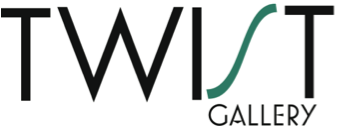“Extracting the Abstract” artist Aml Sultana
What inspires you?
I am inspired by everything ranging from people, my past experiences, and especially music. Even though there are so many different people in my life, they each serve an important purpose in life and help me grow. After deciding to seriously pursue art, I realized that everybody expresses themselves through a form of art, whether they realize it or not. I am a strong believer in experiences telling the tale of your life, so my paintings are created in a way to tell stories from my past experiences. Music is an important aspect of my life so it is attached to every piece of work I have created. When looking at my past work, I can recall what music I was listening to which also reminds me of how I was feeling at that moment. Lana Del Rey, who I discovered in the 9th grade, has been the most impactful artist for me and she is a part of almost every piece of art that I have created since high school.
“Plated Guilt” by Aml Sultana
Why are you drawn to this subject?
Before creating this collection and being introduced to abstract art, I had the wrong perception that art had to be “clean” and “perfect. I used to believe that realistic paintings were the basis of creative art and that every line and detail had to be perfect. My first submission piece for this exhibit was out of my comfort zone because there was no plan and it was all emotion, which is what my past work was about. I enjoy creating abstract art because I had the opportunity to explore a new way of expression and could use so many different skills and techniques to create texture. Abstract art unlocked a different artistic skill that I did not know that I had and I will definitely will be exercising it in the future.
What is your collection about?
My collection focuses on my favourite pieces of work that I have created so far. I was finally able to step out of my comfort zone during the creative process, as I used different materials and an even bigger canvas. This collection tells my story of this past summer and all of the amazing opportunities that I had. I was able to discover new skills, such as murals, and experienced a new feeling of motivation and confidence towards my creative artwork. I am excited to be a part of an exhibition in a gallery that I have admired for a long time. It’s about being sure that this is what I want to do for the rest of my life.
“Auriferous” by Aml Sultana











